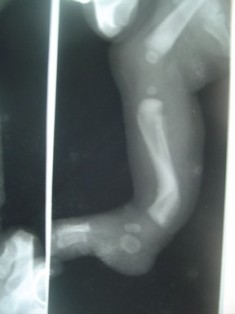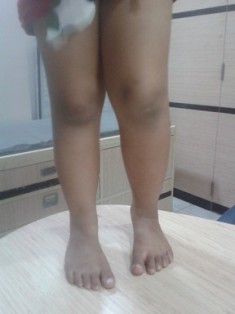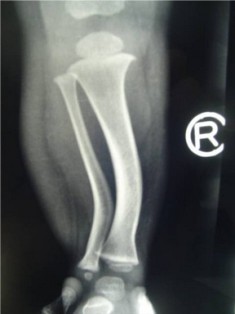Postero-Medial Bowing of Tibia: Expert Insights from Dr. Sameer Desai, Pediatric Orthopedic Surgeon in Pune
Introduction:
Welcome to our informative guide on Postero-Medial Bowing of Tibia, where we delve into the condition’s causes, symptoms, treatment options, and expert advice from Dr. Sameer Desai, a renowned Pediatric Orthopedic Surgeon based in Pune.
Understanding Postero-Medial Bowing of Tibia:
Postero-Medial Bowing of Tibia is a congenital condition characterized by a curvature or bending of the tibia bone, which is one of the two bones in the lower leg. This condition usually becomes apparent during infancy or early childhood. While the
exact cause of this condition is not always known, it is believed to be related to factors affecting fetal bone development.
Symptoms and Diagnosis:
The most noticeable symptom of Postero-Medial Bowing of Tibia is the
inward curving of the tibia bone, which may lead to a bowlegged appearance. Other symptoms can include uneven leg lengths, difficulty walking or standing, and potential discomfort as the child grows. Diagnosis typically involves a thorough physical examination, medical history review, and often imaging studies such as X-rays.
Expert Insights from Dr. Sameer Desai: Dr. Sameer Desai, a distinguished Pediatric Orthopedic Surgeon in Pune, has extensive experience in managing congenital orthopedic conditions, including Postero-Medial Bowing of Tibia. With a commitment to providing the best possible care to his young patients, Dr. Desai emphasizes the importance of early diagnosis and personalized treatment plans.
According to Dr. Desai, Early intervention is crucial for managing Postero-Medial Bowing of Tibia effectively. Regular follow-up visits are essential to monitor the condition’s progression and make necessary adjustments to the treatment plan..
Treatment Options:
The treatment approach for Postero-Medial Bowing of Tibia depends on the
severity of the condition and the age of the patient. Mild cases might resolve on their own as the child grows, while more significant cases may require medical intervention. Treatment options may include:
Observation:
In mild cases, where the curvature is not severe and doesn’t hinder the child’s development, careful monitoring might be recommended.
Orthotic Devices: Custom-made orthotic devices, such as braces or shoe inserts, can help support the child’s leg alignment and encourage normal bone growth.
Physical Therapy: Physical therapy exercises can aid in strengthening the muscles around the affected leg and improve the child mobility.
Surgery: For severe cases or cases where other treatments have not been effective, surgical intervention might be considered. The goal of surgery is to realign the bone and provide optimal leg functionality.
Empowering Families: Dr. Sameer Desai and his dedicated team are dedicated to providing comprehensive care for children with orthopedic conditions. They work closely with families to ensure that every child receives a tailored treatment plan that takes into account their unique needs
and circumstances.
If you suspect your child might have Postero-Medial Bowing of Tibia or any other orthopedic concerns, don’t hesitate to reach out to Dr. Sameer Desai’s clinic in Pune. As a leading Pediatric Orthopedic Surgeon, he specializes in Postero-Medial Bowing of Tibia treatment in Pune, offering expert diagnosis and personalized care. Early detection and intervention can significantly improve your child’s quality of life and future mobility. Book a consultation today!
Conclusion:
Postero-Medial Bowing of Tibia is a congenital condition that requires timely attention and expert management. Dr. Sameer Desai, a trusted Pediatric Orthopedic Surgeon in Pune, is dedicated to guiding families through the diagnosis and treatment process, ensuring the best possible outcomes for children affected by this condition. Contact Dr. Desai clinic to schedule a consultation and take the first step toward your child healthier, more mobile future.




